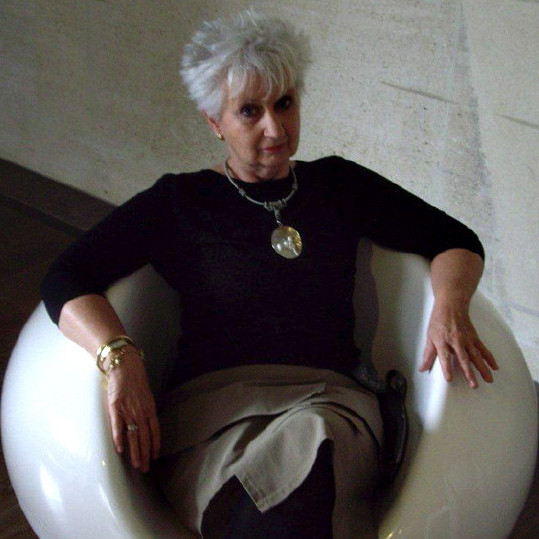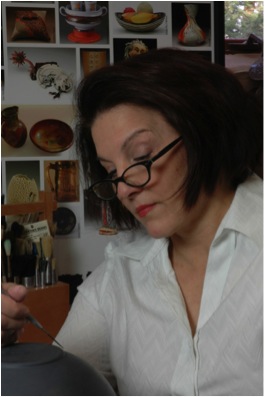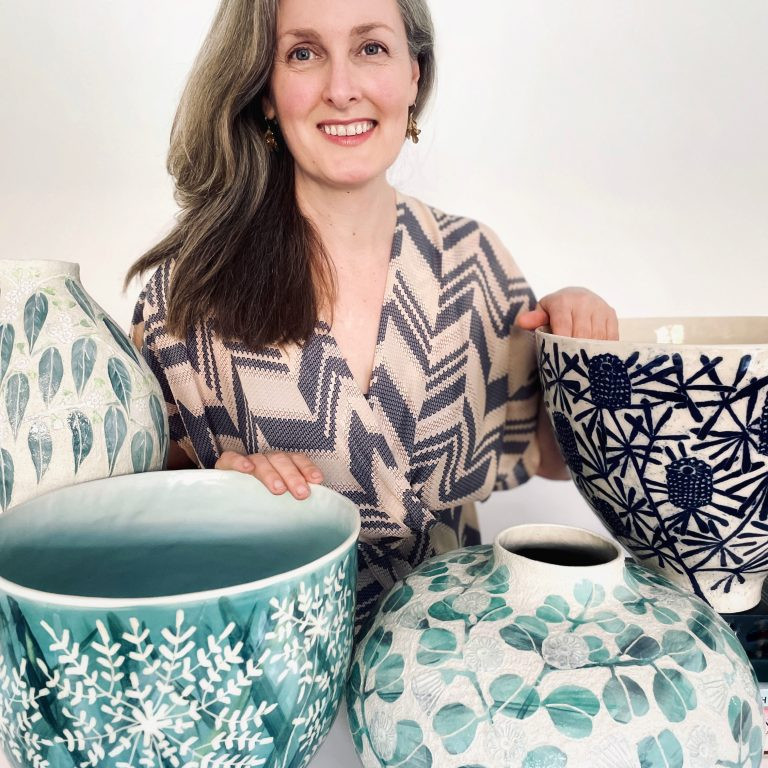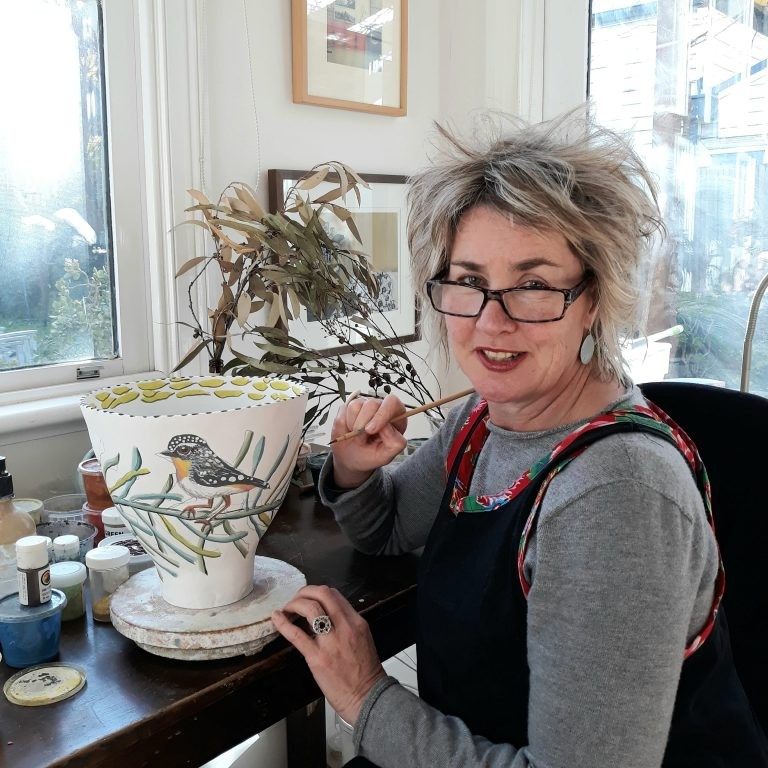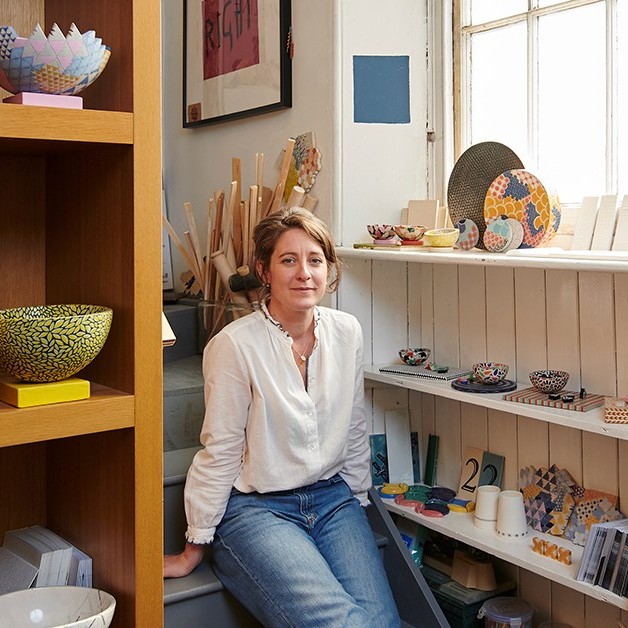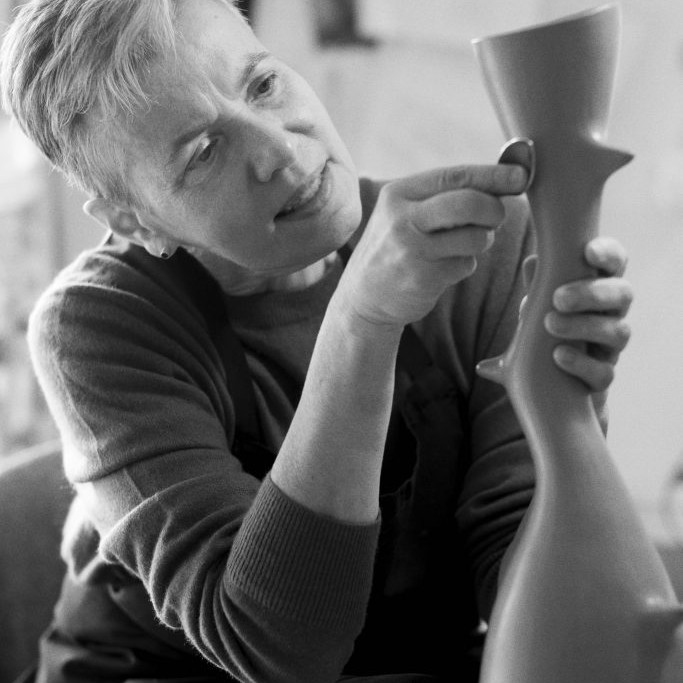Debra Oliva Ceramics - Michigan, USA
You have a background in the arts but did not turn to clay until 1988, can you explain how this came about?
I was a child the first time I saw someone throwing on the wheel and it was a mesmerizing experience. At that moment the desire to work in clay was ignited. However, art opportunities in my community were virtually non-existent. During my university years there were a few clay experiences in the curriculum I was pursuing but working with clay in earnest would have to be put on hold. Much later, after marrying and moving to Michigan, the opportunity to work in clay finally presented itself. I was fortunate to be living in an area where there was a potter’s guild with a fully equipped facility, excellent instructors and one space remaining in the upcoming session. I took a series of classes followed by an advanced program and eventually became a member. I continued my education attending artist workshops, a practice I continue.
Most of your pottery is utilitarian at the base but you then add aesthetics, explain the importance of this combination in your work.
Good functional design should perform properly, be comfortable to use and clean easily. An appealing form and attractive, cohesive decorative elements enriches the experience of the user. Its place in the users life will become something more than simply the performance of a task. My design challenge is to pull those elements together in each piece. In the process to that end, decisions and compromises have to be made as to the degree of importance each element retains in the final piece.
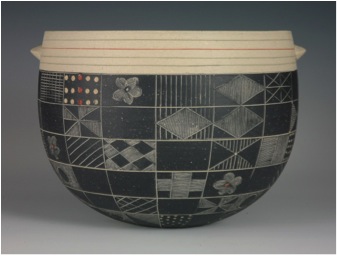
You gain the most pleasure from work that leaves the ultimate use of the piece to the owner, can you expand on this?
I enjoy discovering unique ways to use objects so I am pleased when I create a more versatile piece which might encourage the user to engage their own creativity with respect to its purpose.
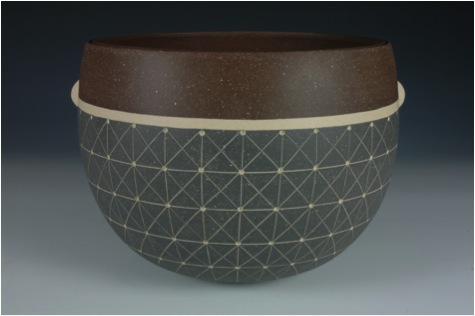
Textiles are very important to you. How do they bring inspiration to your work?
I have had a long standing passion for textiles. What interests me is the way individual threads are so skillfully combined to produce color, pattern and a wide range of textures. The combination of textiles as in garments is a favorite source of inspiration.
Can you explain the way you hand colour your work before glazing?
After the design is etched, the piece is bisque fired. Custom coloured slips or under glazes are then brushed onto the etched areas and the excess is wiped away, leaving colour behind in the recesses. In some cases additional bisque firings are necessary to fix the previous colour before adding subsequent colours. The interior is glazed and the piece receives a final firing to vitrification. The exterior remains unglazed to expose the texture of the clay body.
There is a lot of etching involved in your work, please discuss this?
The etching process came about as a way to represent the threads of woven textiles. To achieve that effect, I created a simple tool from household items that would allow me to work within small areas. The etching is done when the piece is at the leather hard stage. I may work freehand or use motifs drawn onto tracing paper that I position around the piece. The motifs are transferred to the clay by lightly tracing over the designs with a pencil leaving an impression in the clay. I then follow with the etching tool to enhance the designs.
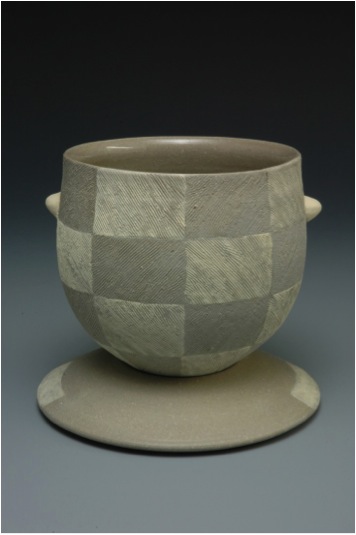
Pattern can be found in most of your work both textile and environmental, can you discuss the importance of repetition?
I often use repetitive geometric designs for their quiet, restful rhythms. Other designs such as floral motifs are more energizing. I use them in a way that implies repetition in that the viewer sees only a portion of the pattern and the eye travels around the piece in search of more.
Can you discuss the pattern, shape and colour in your Grid Bowls?
Grid patterns appear in many craft traditions, across many cultures throughout history. Many examples can be found in textiles. I employ these patterns for simplicity and visual stillness. Full, round bowl forms provide a clean, continuous surface that is perfect for showcasing designs. Pattern and color give a piece a particular mood and flashes of intense colour energize the design.
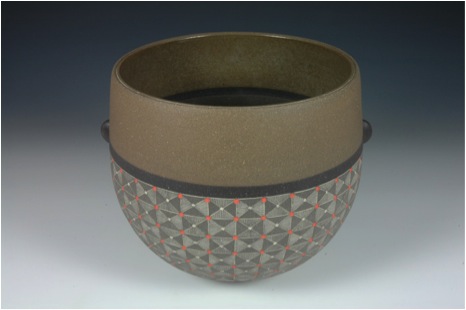
There is a very strong influence of Asia in your work, can you expand on this?
My sensibilities align closely with Asian notions of beauty, particularly that of the Japanese. In that aesthetic I most appreciate the integration of simplicity and complexity, subtlety, serenity and fine craftsmanship. I work to create personal expressions that possess the same spirit and temperament
Teapots are also a part of your work. Can you expand on the importance of teapots to ceramics?
Among the objects for domestic use, the teapot is a special object to those who use them and those who make them. As a user, it is the pleasurable ritual of serving tea from a beloved vessel. As a maker, it is the technical challenge and unlimited creative potential of the teapot that attracts me.
Can you show us a teapot and discuss?
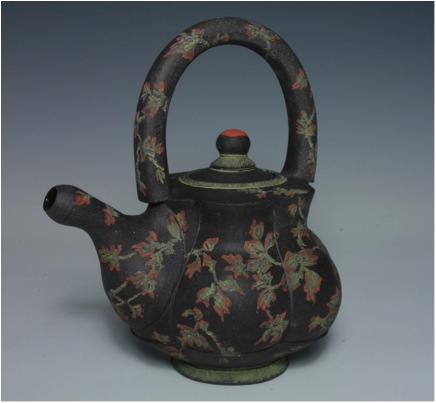
The teapot pictured is inspired by historical Asian ceramic techniques and motifs. The clay is custom coloured as are the slips and under glazes used. The form and parts are thrown on the wheel and are altered and assembled when the clay is in the leather hard stage. The surface decoration intends to invoke a memory of embroidered silk enrobing the teapot. The design was developed free-hand to conform to the shape of the pot. Once etched and bisque fired the colours were hand painted into the etched areas and the excess wiped away. After the final firing, the exterior is waxed and buffed to a soft sheen.
What have been one or two of the highlights of your career?
Teaching is always a very rewarding experience. There have also been a few awards along the way. Most recently, juror Elaine Henry honoured me with a First Place award at CeramACom 2013, at Blue Line Arts in Roseville, CA, USA. It is always encouraging to be recognized in that way.
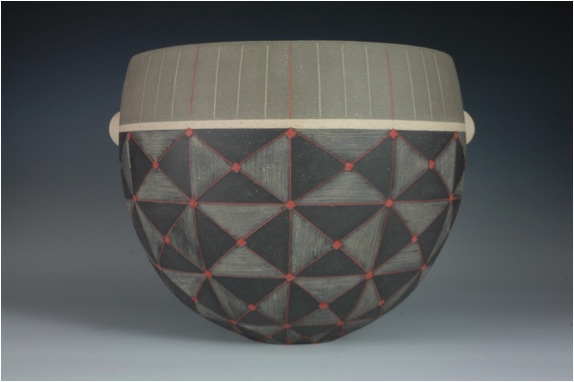
You have taken heaps of classes and now you teach classes. How important are both aspects for your artistic life?
To be sure, not having art opportunities available to me in my youth is a big part of why I teach. It is important to me to contribute to the continuation of this craft tradition just as others have shared so generously with me. Over the years, I’ve taught classes to children and adults. Regardless of the age of the student, they all bring enthusiasm and a fresh point of view to the experience. I gladly share what I have learned in exchange for that!
Contact Details
www.debraolivaceramics.com
Debra Oliva, Michigan, USA
Interview by Deborah Blakeley, July, 2013
Think a colleague or friend could benefit from this interview?
Knowledge is one of the biggest assets in any business. So why not forward this on to your friends and colleagues so they too can start taking advantage of the insightful information the artist has given?
Other artists you may be interested in:

